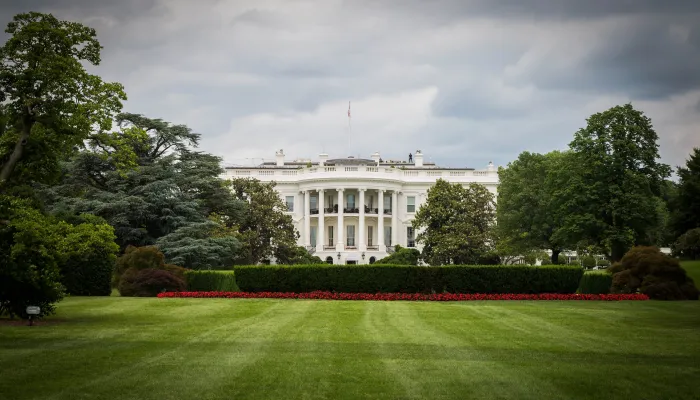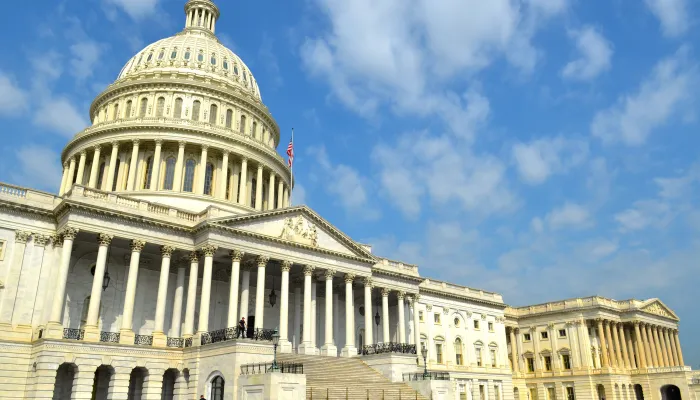The Budget Act At 50 – Budget Process Reform Recommendations for the 118th Congress
The Congressional Budget and Impoundment Control Act will turn 50 next year, and the budget process is showing its age. The current budget process is in many ways broken. Three major areas in which the process needs to be improved are:
- Timely Budgeting and Accountability
- Requirements to pass a budget.
- Privileged consideration of bipartisan, deficit reducing budgets.
- Modification of floor consideration of budget resolutions.
- Automatic continuing resolutions to avoid government shutdowns.
- Fiscal Responsibility
- Fiscal targets as part of the budget process.
- A strengthened pay-as-you-go.
- Prohibition of adopting of legislation prior to receiving a score of the costs.
- Requiring reconciliation to be used for deficit reduction by restoring and codifying the “Conrad rule.”
- Offsetting the costs of borrowing for emergencies.
- Reforms to the debt ceiling.
- Establishing a special process to secure major trust funds.
- Transparency and Straightforward Budgeting
- Creation of a Fiscal State of the Nation.
- Including the cost of borrowing.
- Fixes to a number of the most egregious budget gimmicks.
- Acknowledge the budgetary impact of tax expenditures.
This paper presents a number of options that could help improve the budget process in these three areas. The list is not exhaustive, and not all options would work with each other. For more ideas, see our Better Budget Process Initiative.
Timely Budgeting and Accountability
Under the current budget process, Congress rarely adopts its budget resolution on time, if at all. Congress hasn't completed a budget resolution on time since 2003 and has not even adopted a budget resolution at all in ten out of the last 20 years. And it has been more than 25 years since lawmakers enacted all appropriations bills before the beginning of the new fiscal year. More often, lawmakers have relied on stop-gap continuing resolutions (CRs) and occasionally endured disruptive government shutdowns. The result has been too many crisis moments, the loss of sensible norms for how we budget, and too often the world’s largest economy operating without a budget in place.
To address these and related issues, policymakers could adopt:
-
Requirements to pass a budget. Congress should not make policy affecting the budget without first passing one, meaning no legislation with fiscal impact should be considered until a budget has been adopted. As an added incentive, lawmakers should not be allowed to leave for a Congressional recess if a budget resolution is overdue, building on similar rules restricting adjournment in the House in July if appropriations bills are incomplete. This requirement could be waived for emergencies.
-
Privileged consideration of bipartisan, deficit-reducing budgets. If lawmakers fail to meet their deadline to pass a budget resolution, there should be alternative paths for consideration of bipartisan, deficit-reducing budgets.1 In the House, this could take the form of an enhanced discharge petition, where a resolution that meets a bipartisan threshold of support and reduces the deficit can receive an automatic floor vote; in the Senate, it could take the form of a new bipartisan pathway for a budget resolution that also addresses the debt limit and discretionary spending caps. We should find as many ways as possible to encourage bipartisan collaboration and fiscal responsibility throughout the budget process.
-
Modification of floor consideration of budget resolutions. Current Senate procedures provide for an open-ended vote-a-rama during consideration of the budget resolution. These marathon vote sessions are a significant hurdle for the Senate considering a budget because they require senators to vote on politically sensitive but often symbolic amendments, often with little notice. Lawmakers could reform this process by reducing debate time, limiting amendments, and adding procedures to ensure senators are able to review amendments in a timely manner before voting on them. Such reforms could help curtail this incentive to not bring a budget to the floor in the Senate.2
-
Automatic continuing resolutions to avoid government shutdowns. If appropriations bills have not been adopted by the end of the fiscal year, there should be an automatic continuing resolution at the same level of funding as the previous year to avoid unnecessary and disruptive government shutdowns. This auto-CR could be coupled with incentives and penalties to encourage the enactment of full appropriations.3
Fiscal Responsibility
The nation’s current fiscal situation is dire, with debt headed toward a record share of the economy, interest payments growing faster than any other part of the budget, and three major trust funds within a decade of insolvency. High and rising deficits and debt can boost inflation and interest rates, slow income growth, hinder our ability to deal with emergencies, weaken our national security, and jeopardize the well-being of younger generations. However, the budget process does little to facilitate efforts to put the budget on a more sustainable path.
To address these and related issues, policymakers could adopt:
-
Fiscal targets as part of the budget process. Congress should adopt multi-year debt-to-GDP targets designed to gradually reduce debt as a share of GDP and keep it below 100% of GDP. Policymakers could further establish expedited procedures to help meet the targets along with budgetary triggers for enforcement.4
-
A strengthened pay-as-you-go. Our fiscal outlook would be much better if lawmakers had consistently adhered to pay-as-you-go (PAYGO) rules and laws by offsetting any and all spending increases or tax cuts. Policymakers should restore PAYGO rules in the House, while strengthening Congressional and statutory PAYGO. In the Senate, the vote threshold for waiving PAYGO or any related points of order should be above 60, so that it is harder to add to the deficit than pass ordinary legislation subject to the filibuster. In the House, waiving PAYGO should require a separate roll call vote, making it clear when Congress waives these rules and which Members do so. Similar hurdles should make it more difficult to exempt legislation from the PAYGO scorecard, to wipe the scorecard clean, or to waive or cancel the PAYGO enforcement sequester without offsets.
-
Prohibition of adopting of legislation prior to receiving a score of the costs. Lawmakers should not pass legislation without knowing how much it would add to or subtract from the national debt, and Senate and House rules should prohibit lawmakers from considering legislation on the floor without a formal cost estimate from the Congressional Budget Office. Special rules can be made to allow for less precise scoring of floor amendments that CBO does not believe would substantially alter the initial score, and waivers could exist in the case of true emergencies.
-
Requiring reconciliation to be used for deficit reduction by restoring and codifying the “Conrad rule.” Reconciliation was designed to create a fast-track process to help lawmakers meet targets in the budget resolution, but in recent years it has been used mainly as a tool to avoid the Senate filibuster -- often for legislation that would dramatically expand the budget deficit. The “Byrd” rule prevents reconciliation bills from adding to the deficit over the long-term (generally after ten years), but in 2015 the Senate ended the “Conrad Rule” which also prevented reconciliation from boosting deficits over the budget window. Policymakers should reinstate the Conrad Rule by establishing a 60-vote point of order against reconciliation legislation that increases deficits inside the budget resolution’s window and should create a similar rule in the House.
-
Offsetting the costs of borrowing for emergencies. Much of the run-up of the national debt in past years is the result of borrowing for legitimate emergencies. (Much of it is also from borrowing for no good reason whatsoever.) Following emergencies, Congress should adopt plans to repay that borrowing over a reasonable amount of time, and if they fail to do so, automatic spending cuts and/or taxes cuts should go into effect to gradually offset the cost of the borrowing. Such an “emergency spending offset” would help improve the fiscal situation following emergencies and introduce some element of tradeoffs even during emergencies.
-
Reforms to the debt ceiling. The need to raise the debt limit has often offered policymakers an opportunity to enact meaningful fiscal reforms. However, the debt limit itself is not designed to maintain a sustainable budget, and the economic cost of failing to raise the debt limit is high. There are a number of options to reform the debt ceiling that would reduce the risk of default while encouraging responsible budgeting. For example, reforms could:
- Allow automatic debt limit increases or suspensions if fiscal targets are met.
- Allow a President to suspend the debt limit by proposing a deficit reduction plan.
- Incorporate debt limit increases into the budget resolution.
- Require a debt limit increase vote at the same time as a vote on any significant deficit-increasing legislation so lawmakers are accountable for changes in the debt limit at that point in time instead of months or years later.
- Replace the debt limit with a ‘debt cap’ that limits debt as a share of GDP and is enforced by automatic tax and spending adjustments.5
-
Establishing a special process to secure major trust funds. The Social Security Old-Age and Survivors Insurance, Medicare Hospital Insurance, and highway trust funds are all within a decade of insolvency, at which point the law calls for deep across-the-board cuts. To address these looming insolvency threats, lawmakers could establish an expedited process or appoint a commission or special committee.6
Transparency and Straightforward Budgeting
Lawmakers and the public should have access to clear and honest information about the budget and our long-term fiscal trajectory, but the presentations of a number of budget concepts are complicated and opaque. We should strive to make the drivers of deficits, including the effects of new legislation, and the overall debt trajectory easier to understand and harder to ignore.
To address these and related issues, policymakers could adopt:
-
Creation of a Fiscal State of the Nation. This would highlight the immediate fiscal challenges that demand policymakers’ attention as well as increase the American people’s awareness that our current long-term fiscal path is unsustainable.7
-
Including the cost of borrowing. Congress should require the Congressional Budget Office to include interest cost estimates for all scores of legislation. This change will ensure the full fiscal impact of legislation is measured and understood. Often, a bill may falsely appear to be paid-for because of the timing of costs and offsets.
-
Fixes to a number of the most egregious budget gimmicks. The current budget process includes several rules designed to support fiscal discipline, including statutory and rules-based pay-as-you-go (PAYGO) and cut-as-you-go (CUTGO), statutory caps on discretionary appropriations, limits on the use of reconciliation, and a variety of points of order to enforce levels in the budget resolution. However, these rules are too often ignored or evaded. Increasingly pervasive budget gimmicks provide legal workarounds to the existing rules and norms meant to enforce fiscal discipline. Some fixes include:
- Minimize “rosy scenario” economic assumptions and “magic asterisk” savings gimmicks.
- Budget resolutions should incorporate rules to limit the use of budget gimmicks to evade discretionary caps, PAYGO, and other enforcement measures.
- Establish clear guidelines and requirements for discretionary spending outside the caps, such as Overseas Contingency Operations/Global War on Terror (OCO/GWOT), disaster, or emergency spending.
- Prevent the use of timing shifts to manipulate budget scores.
- Prohibit the use of cuts in “empty BA” to comply with discretionary spending caps, such as through savings from discretionary rescissions or Changes in Mandatory Spending Programs (CHIMPs).
- Promote trust fund integrity and prevent trust fund “double counting.”
-
Acknowledge the budgetary impact of tax expenditures. Tax expenditures are often economically equivalent to spending programs and should be transparent in the budget process. Tax expenditures could be included in the budget resolution formally and in reconciliation instructions specifically so they can be compared with spending. Tax-writing committees could send revenue projections to the Budget Committees that include estimates of how those numbers could change if expiring tax expenditures were extended. CBO could be required to regularly provide information and analysis on the use, incidence, and efficiency of every major tax expenditure compared to similar spending programs.
Conclusion
Budget process reform is not a substitute for the political willpower needed to make difficult but fiscally responsible choices. Any budget process will only be truly successful and fiscally disciplined if policymakers abide by the procedures and rules that they have established.
Nevertheless, a better budget process could promote fiscal discipline and bring greater transparency and accountability to budget policymaking. Further, substantial reforms to the budget process could help strengthen its credibility among lawmakers as well as creditors, leading to greater compliance with the new framework. Fewer ignored deadlines and crisis-driven decisions could help restore faith in lawmakers’ ability to do one of their most basic jobs.
Lawmakers should also recognize that perceiving the current budget process as broken or unworkable is not an excuse to disregard the current process as reforms are offered, debated, and hopefully approved.
Our nation needs a budget process that helps, not worsens, the fiscal challenges facing current and future generations. In the nearly 50 years since the passage of the Congressional Budget Act of 1974, it is now more important than ever to ensure both the Executive and Legislative branches of government move forward and address the rapidly rising national debt.
Hopefully, the process reforms provided here will assist Congress in this vital effort.
1 Current Senate rules allow a senator to bring up a budget resolution for a floor vote if the April 15 deadline has passed.
2 The Bipartisan Congressional Budget Reform Act (BCBRA) approved by the Senate Budget Committee in 2019 reduced general debate time on budget resolutions to 20 hours from 50 hours and debate time on each amendment to one hour from two hours. Total consideration time under BCBRA would be 50 hours, with 30 hours dedicated to amendments. Our 2016 paper suggested reforms to the amendment filing process during vote-a-rama, including a filing deadline for amendments that allows for more timely review by senators.
3 The bipartisan Prevent Government Shutdowns Act of 2023, introduced by Senators Maggie Hassan (D-NH) and James Lankford (R-OK), would establish a process for automatic-CRs and provide incentives for lawmakers to work quickly to end shutdowns.
4 The Reforming America’s Fiscal Toolkit (RAFT) Act of 2021, previously introduced by Representatives Tim Burchett (R-TN) and Ed Case (D-HI), provided for the creation of a joint select committee to meet the fiscal goals in the budget if Congress failed to reach them using reconciliation-like instructions.
5 The BCBRA would have created automatic legislation to lift the debt limit upon passage of the budget resolution by the House and Senate within the context of a larger set of reforms to the budget process. The Responsible Budgeting Act (RBA), previously introduced by Representative Scott Peters (D-CA) and now-Budget Committee Chairman Jodey Arrington (R-TX), presents one recent roadmap for debt limit reform. The bill would create two potential paths to raise the debt limit. First, the debt limit could be raised through the passage of a fiscally responsible budget resolution. If that effort is unsuccessful, the President could raise the debt limit (subject to possible Congressional disapproval) and would separately be required to submit a debt reduction proposal that would receive expedited consideration in Congress. The RBA would reduce the risk of dangerous default while preserving a debate on our fiscal outlook.
7 Lawmakers in both House and Senate have introduced Fiscal State of the Nation Resolution(s) to do this.


